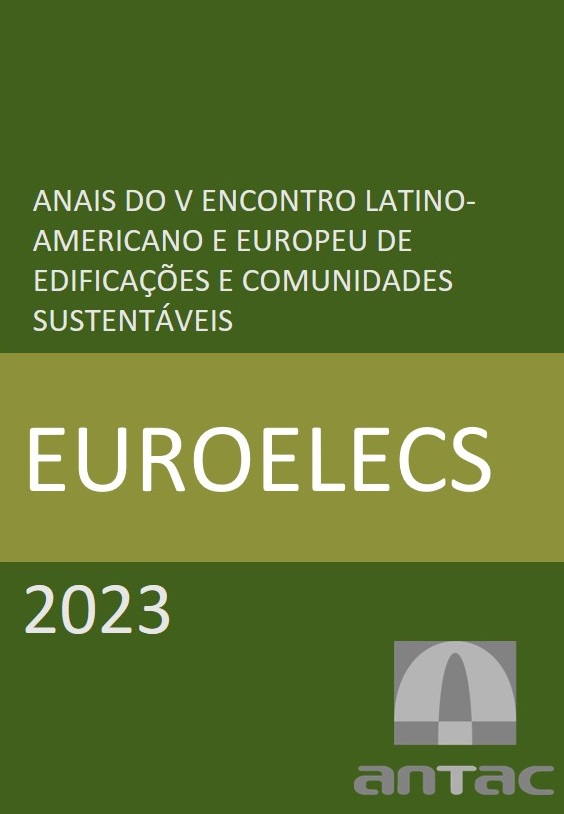Livable cities:
an analysis of the indicators proposed by the standards
Keywords:
livable cities, livability indicators, smart cities, sustainabilityAbstract
Research on city planning has intensified over the years, especially since the publication of the standard ISO 37120 with indicators for sustainable cities and communities. Interest in smart cities gained momentum with the publication of the “Brazilian Charter for Smart Cities” concomitantly with the publication of the translated version of ISO 37122. Especially since COVID19, interest in resilient cities has increased, also gaining a standard specific on the subject - ISO 37123. In addition, there are indicators for livable cities, which seek to assess performance in terms of the wellbeing offered to citizens. In this sense, the International Conference on Livable Cities took place in June 2023.
In this sense, this paper aims to discuss the indicators proposed by the standards to be adopted in the planning and management of cities aiming at the production of sustainable, resilient, smart and livable cities. Additionally, a case study was carried out with the analysis of the main indicators presented at the international conference on the topic, with emphasis on the indicators proposed by the Australian Urban Observatory. The result of the analysis revealed some indicators that are little valued by city standards, which go far beyond the adoption of the possibilities offered by digital technologies. It is understood that there is a need to combat the “sick cities syndrome” through measures that enable socialization and resumption of contact, restoring people's sense of belonging to society.
References
ALBINO V, BERARDI U and DANGELICO RM (2015) Smart Cities: Definitions, Dimensions, Performance, and Initiatives Journal of Urban Technology, [online] 22 (1), 3-21
AUO Cities and Indicators Disponível em: http://auo.org.au/measure/
BARNETT, D.W., BARNETT, A., NATHAN, A. et al.(2017) Built environmental correlates of older adults’ total physical activity and walking: a systematic review and meta-analysis. Int J Behav Nutr Phys Act 14, 103
BARRIE H. et al (2023) Designing for Community: The Value of Public Space in Mixed-use, High-rise Buildings In: Livable Cities Conference, Nova York Disponível em: https://amps-research.com/event/in-person-livable-cities-new-york/
BRASIL. (2021) Carta Brasileira para Cidades Inteligentes. Brasília: Ministério do Desenvolvimento Regional.
CANGUSSU TOMAZ GARCIA, M, DIAZ, E., TUUHIA, V., VERBRUGGE, G. RADANNE, P. (2012) Understanding Rio+20 Conference: building a Green economy and democratic governance of the planet in a framework of sustainable development. Rio+20 United Nations Conference, Rio de Janeiro: Brasil
GASSMANN O, BÖHM J and PALMIÉ M (2019) Smart cities: introducing digital innovation to cities Emerald Publishing Limited
Global Liveability Index (2023). Summary report. Disponível em: https://www.eiu.com/n/campaigns/global-liveability-index-2023/
HERRMANN-LUNECKE M. G. (2023) Livable cities and challenges for older person’s walking: the case of central neighborhoods in Santiago, Chile ? In: Livable Cities Conference, Nova York Disponível em: https://amps-research.com/event/in-person-livable-cities-new-york/
IPCC AR6 SYR, (2023) Synthesis report of the IPCC Sixth Assessment Report (AR6). Disponível em https://www.ipcc.ch/report/ar6/syr/downloads/report/IPCC_AR6_SYR_LongerReport.pdf
IVALDI E, PENCO L, ISOLA G and MUSSO E (2020) Smart And Sustainable Cities and the Urban Knowledge-Based Economy: A NUTS3 Level Analysis Soc. Indic. Res 150, 45-72 [online]
MALIENE, Vida (2008) Sustainable Housing – part of a healthy and attractive community. In:CIBW070 Conference in Facilities Management – Healthy and Creative Facilities, Proceedings of … Edinburgh, 2008, p 343-350
MIERZEJEWSKA et al (2023) How to create healthy, livable, stress resilient, post pandemic cities? In: Livable Cities Conference, Nova York Disponível em: https://amps-research.com/event/in-person-livable-cities-new-york/
ORGANIZAÇÃO MUNDIAL DA SAÚDE.(2011) Global Health and aging. Geneva: World Health Organisation;
PREFEITURA DE SÃO JOSÉ DOS CAMPOS (2022) Disponível em: < https://www.sjc.sp.gov.br/noticias/2022/marco/16/sao-jose-e-certificada-a-primeira-cidade-inteligente-do-brasil/>
SAELENS BE, SALLIS JF, BLACK JB, CHEN D. (2003) Neighborhood-based differences in physical activity: an environment scale evaluation. Am J Public Health. 2003 Sep;93(9):1552-8.
SALGADO, M S (2022) Analysing the COVID19 challenge in the context of a smart city considering the SDG’s: case study in New York City IOP Conference Series: Earth and Environmental Science, Volume 1101, Knowledge and Learning DOI 10.1088/1755-1315/1101/3/032026
UNITED NATIONS (2015) Economic and Social Council The UNECE–ITU 2015 Smart Sustainable Cities Indicators ECE/HBP/2015/4 [online]
YIGITCANLAR T, KAMRUZZAMAN M, FOTH M, SABATINI-MARQUES J, COSTA E and IOPPOLO G (2019) Can cities become smart without being sustainable? A systematic review of the literature Sustainable Cities and Society [online] 45, 348-365

